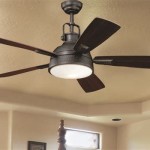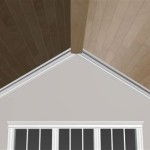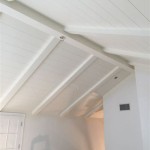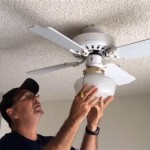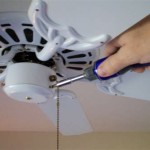False Ceiling Design Ideas for Living Room
The living room, often considered the heart of a home, serves as a space for relaxation, entertainment, and social gatherings. Its design plays a pivotal role in shaping the overall ambiance and reflecting the homeowner's personal style. While furniture, wall décor, and flooring are essential elements, the ceiling often remains an overlooked canvas with tremendous potential. A well-designed false ceiling can significantly enhance the aesthetic appeal of a living room, improve acoustics, conceal wiring and ductwork, and even influence the perceived height and size of the space.
False ceilings, also known as dropped ceilings or suspended ceilings, are secondary ceilings installed below the structural ceiling of a room. Constructed from lightweight materials like gypsum board, plaster of Paris (POP), PVC, or wood, they are suspended using a grid of metal channels. The cavity between the false ceiling and the original ceiling can be utilized for various purposes, including housing electrical wiring, HVAC ducts, and lighting fixtures. This article explores a variety of false ceiling design ideas for living rooms, providing insights into different styles, materials, and functionalities.
Types of False Ceiling Materials: A Comparative Overview
The selection of the appropriate material for a false ceiling is crucial, as it impacts the overall aesthetics, durability, and maintenance requirements of the installation. Each material possesses unique characteristics that make it suitable for specific applications and design preferences.
Gypsum Board: Gypsum board is one of the most widely used materials for false ceilings due to its affordability, versatility, and ease of installation. It is composed of gypsum plaster pressed between two sheets of paper. Gypsum boards are lightweight, fire-resistant, and can be easily cut and shaped to create various designs. They offer a smooth, seamless finish and can be painted or wallpapered to match the room's décor. However, gypsum boards are susceptible to moisture damage and require proper sealing and ventilation in humid environments.
Plaster of Paris (POP): POP is another popular choice for creating intricate and decorative false ceiling designs. It is a quick-setting gypsum plaster that can be molded into various shapes and patterns. POP ceilings offer excellent flexibility in design and can be used to create curved surfaces, recessed lighting coves, and ornate details. They are also relatively lightweight and durable. However, POP ceilings can be more expensive than gypsum board ceilings, and their installation requires skilled craftsmanship.
PVC (Polyvinyl Chloride): PVC panels are a cost-effective and moisture-resistant alternative to gypsum and POP. They are lightweight, easy to install, and require minimal maintenance. PVC ceilings are available in a wide range of colors, patterns, and textures, offering versatility in design. They are also resistant to mold, mildew, and termites, making them suitable for humid environments. However, PVC ceilings are not as aesthetically appealing as gypsum or POP ceilings and may not be suitable for high-end living rooms.
Wood: Wood ceilings offer a warm and natural aesthetic, adding a touch of sophistication and elegance to the living room. They can be constructed from solid wood, wood veneers, or engineered wood products. Wood ceilings are available in various styles, including plank ceilings, coffered ceilings, and slatted ceilings. They offer excellent sound absorption properties and can help improve the acoustics of the room. However, wood ceilings can be more expensive than other materials and require regular maintenance to prevent moisture damage and insect infestation.
Metal: Metal ceilings, typically made from aluminum or steel, are a durable and low-maintenance option for living rooms. They are available in a variety of finishes, including painted, powder-coated, and perforated. Metal ceilings offer excellent fire resistance and are suitable for commercial and residential applications. They can be used to create modern and industrial-style living rooms. However, metal ceilings can be more expensive than other materials and may not be as aesthetically appealing to some homeowners.
Exploring Different False Ceiling Design Styles
Beyond the choice of material, the design style of the false ceiling significantly impacts the overall look and feel of the living room. Different styles cater to varying aesthetic preferences and architectural styles.
Recessed Lighting Ceilings: These ceilings incorporate recessed lighting fixtures, also known as can lights or pot lights, to provide ambient or task lighting. The recessed lights are installed flush with the ceiling surface, creating a clean and minimalist look. Recessed lighting ceilings are ideal for creating a modern and sophisticated ambiance. They can be combined with other design elements, such as cove lighting or accent lighting, to create a more layered and dynamic lighting scheme.
Cove Lighting Ceilings: Cove lighting involves indirect lighting that is concealed within a recess or cove in the ceiling. The light is directed upwards, bouncing off the ceiling surface and creating a soft, diffused glow. Cove lighting ceilings are ideal for creating a warm and inviting atmosphere. They can be used to highlight architectural features or to add a touch of drama to the living room. The color of the light can also be varied to create different moods.
Suspended Grid Ceilings: These ceilings consist of a grid of metal channels that are suspended from the original ceiling. The grid is filled with lightweight panels, typically made from mineral fiber or fiberglass. Suspended grid ceilings are commonly used in commercial spaces but can also be used in residential living rooms to create a modern and industrial look. They offer easy access to the space above the ceiling for maintenance and repairs.
Coffered Ceilings: Coffered ceilings feature a series of recessed panels or coffers, creating a grid-like pattern on the ceiling surface. Coffered ceilings add depth and dimension to the living room and can be used to create a sense of grandeur and formality. They are often used in traditional or transitional-style homes. Coffered ceilings can be constructed from wood, gypsum board, or POP.
Tray Ceilings: Tray ceilings feature a central recessed area that is higher than the surrounding ceiling. The recessed area can be any shape, such as rectangular, oval, or circular. Tray ceilings add height and visual interest to the living room. They can be used to create a focal point in the room or to highlight a chandelier or other lighting fixture. Tray ceilings can be enhanced with crown molding or other decorative details.
Island Ceilings: An island ceiling refers to a section of the ceiling that is lower than the rest of the ceiling. This can be used to visually define a specific area within the living room, such as a seating area or a dining nook. Island ceilings can be any shape or size and can be combined with other design elements, such as recessed lighting or cove lighting.
Minimalist or Flush Ceilings: These ceilings prioritize simplicity and clean lines. They are typically made from gypsum board or POP and are designed to blend seamlessly with the walls. Minimalist ceilings are ideal for creating a modern and uncluttered living room. They often incorporate recessed lighting and are painted in a neutral color palette.
Key Considerations for Choosing a False Ceiling Design
Selecting the right false ceiling design involves careful consideration of various factors, including the room's size and shape, the desired aesthetic, the budget, and the functional requirements. A well-planned false ceiling can enhance the overall living experience, while a poorly designed one can detract from the room's appeal.
Room Size and Height: The size and height of the living room are crucial factors in determining the appropriate false ceiling design. In smaller rooms, a simple and minimalist design is often the best choice to avoid overwhelming the space. For low-ceilinged rooms, it is recommended to avoid elaborate designs that may further reduce the perceived ceiling height. Conversely, in larger rooms with high ceilings, more elaborate designs, such as coffered ceilings or tray ceilings, can be used to add visual interest and create a sense of grandeur. The key is to maintain a sense of proportion and balance.
Lighting Requirements: The lighting requirements of the living room should also be considered when choosing a false ceiling design. If ample ambient lighting is desired, recessed lighting ceilings or cove lighting ceilings may be the best option. If task lighting is required for specific activities, such as reading or working, adjustable spotlights or track lighting can be incorporated into the false ceiling design. The color temperature and intensity of the lighting should also be carefully considered to create the desired ambiance.
Acoustic Properties: In rooms where sound absorption is important, such as home theaters or living rooms used for entertainment, acoustic ceiling tiles or panels can be incorporated into the false ceiling design. These materials help to reduce reverberation and echo, improving the clarity of sound. Wood ceilings also offer excellent sound absorption properties. The choice of materials and design should be guided by the specific acoustic requirements of the space.
Budget: The budget is another important consideration when selecting a false ceiling design. The cost of a false ceiling can vary significantly depending on the materials used, the complexity of the design, and the labor costs involved. It is important to establish a realistic budget before starting the project and to obtain quotes from multiple contractors to ensure that the price is competitive. Value engineering can be employed to reduce costs without compromising on the quality or aesthetics of the design.
Maintenance: The maintenance requirements of the false ceiling should also be considered. Some materials, such as gypsum board and POP, require regular painting or cleaning to maintain their appearance. Other materials, such as PVC and metal, are more durable and require minimal maintenance. The choice of material should be based on the homeowner's preferences and their willingness to invest time and effort in maintaining the ceiling. Regular inspections and timely repairs can help extend the lifespan of the false ceiling.
By carefully considering these factors, homeowners can select a false ceiling design that not only enhances the aesthetic appeal of their living room but also improves its functionality and overall living experience. Careful planning and execution are key to achieving a successful and long-lasting result.

Best False Ceiling Design Ideas For Living Rooms In 2025 Gyproc

Explore False Ceiling Profile Lights For Modern Ambiance Beautiful Homes

Top 30 Best And Glorious False Ceiling Tv Lounge Designs Home Decorating Ideas

Best False Ceiling Designs For Living Room Designcafe

Top 100 Living Room False Ceiling Design Ideas 2024 Pop Designs For

Stunning Ceiling Design Ideas For Drawing Rooms

False Ceiling Designs Ideas To Make Your Living Room Look Amazing

Modern And Trendy False Ceiling Ideas For Living Room Decorpot Home Interiors

Wooden Ceiling Design For The Living Room In Your Home

Top 5 Modern Living Room False Ceiling Design In Nepal Monika Group
Related Posts

